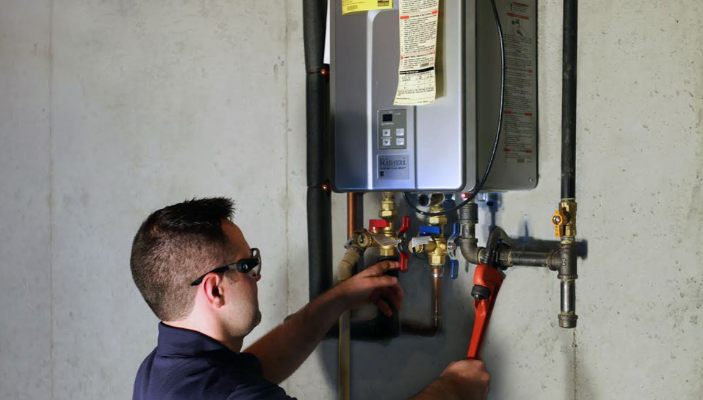Steps to Properly Maintain Your Home's Hot Water SystemBest Practices for Caring for Your Home's Hot Water System
Steps to Properly Maintain Your Home's Hot Water SystemBest Practices for Caring for Your Home's Hot Water System
Blog Article
They are making a few great points relating to Tips on Maintaining a Water Heater as a whole in this article below.

Warm water is vital for day-to-day comfort, whether it's for a rejuvenating shower or cleaning meals. To guarantee your hot water system runs efficiently and lasts much longer, normal maintenance is vital. This article offers useful pointers and insights on how to preserve your home's warm water system to avoid disruptions and expensive repair work.
Intro
Maintaining your home's hot water system could appear challenging, however with a couple of simple steps, you can guarantee it runs smoothly for years to find. This overview covers everything from comprehending your hot water system to DIY upkeep tips and recognizing when to call in expert assistance.
Relevance of Maintaining Your Hot Water System
Routine upkeep not just expands the lifespan of your hot water system however likewise guarantees it runs successfully. Overlooking maintenance can cause lowered performance, greater energy bills, and even premature failure of the system.
Indications Your Warm Water System Requirements Upkeep
Recognizing when your warm water system requires focus can prevent significant problems. Watch out for indications such as irregular water temperature level, unusual noises from the heating unit, or rustic water.
Comprehending Your Warm Water System
Before diving into maintenance tasks, it's valuable to comprehend the fundamental elements of your hot water system. Typically, this includes the water heater itself, pipes, anode rods, and temperature controls.
Monthly Maintenance Tasks
Regular monthly checks can aid capture small problems prior to they intensify.
Flushing the Water Heater
Flushing your hot water heater gets rid of sediment accumulation, improving efficiency and prolonging its life.
Monitoring and Changing Anode Rods
Anode poles stop rust inside the tank. Inspecting and changing them when worn is important.
Examining and Changing Temperature Settings
Readjusting the temperature level settings makes sure optimal efficiency and security.
DIY Tips for Upkeep
You can perform numerous maintenance jobs yourself to maintain your warm water system in leading condition.
Looking for Leaks
Consistently examine pipelines and connections for leaks, as these can bring about water damages and higher bills.
Examining Pressure Relief Valves
Examining the pressure relief valve guarantees it works properly and prevents too much pressure buildup.
Shielding Pipelines
Protecting warm water pipes minimizes heat loss and can save power.
When to Call a Professional
While do it yourself maintenance is helpful, some concerns need specialist know-how.
Complex Problems Calling For Professional Assistance
Instances include major leakages, electric problems, or if your hot water heater is consistently underperforming.
Routine Specialist Upkeep Advantages
Specialist upkeep can consist of thorough assessments, tune-ups, and making certain compliance with safety and security standards.
Final thought
Normal upkeep of your home's hot water system is vital for performance, long life, and cost savings. By complying with these pointers and knowing when to seek specialist assistance, you can guarantee a trusted supply of hot water without unforeseen disturbances.
How to Maintain an Instant Hot Water Heater
Before tinkering with your hot water heater, make sure that it’s not powered on. You also have to turn off the main circuit breaker and shut off the main gas line to prevent accidents. Also turn off the water valves connected to your unit to prevent water from flowing into and out of the appliance. 2. When you’re done, you have to detach the purge valves’ caps. These look like the letter “T” and are situated on either side of the water valves. Doing so will release any pressure that has accumulated inside the valves while at the same time avoid hot water from shooting out and burning your skin. 3. When the purge valves’ caps are removed, you have to connect your hosing lines to the valves. Your unit should have come with three hoses but if it didn’t, you can purchase these things from any hardware or home repair shops. You can also get them from retail stores that sell water heating systems. Read the user’s manual and follow it to complete this task properly. When the hosing lines are connected, open the purge port’s valves. 4. You should never use harsh chemical cleaners or solutions when cleaning your unit. Make use of white vinegar instead. It should be undiluted and you’ll probably use about 2 gallons. 5. Now flush your water heater. This task should probably take about 40 minutes. We can’t give you specific directions for this because the procedure is carried out depending on the type, model and brand of your heater. With that being said, refer to the user’s manual. 6. When you’re done draining the unit, you have to turn off the purge port valves again. Remove the hosing lines that you earlier installed on each of the water valves. Put the valve caps (purge port) back in their respective places and be very careful so as not to damage the rubber discs that are found inside these caps. 7. Now that everything’s back in place, check your user’s manual again to find out how to reactivate your water heating system. 8. Once it is working, turn one of your hot water faucets on just to let air pass through the heater’s water supply pipes. Leave the tap on until water flows smoothly out of it. https://www.orrplumbing.com/blog/2014/september/how-to-maintain-an-instant-hot-water-heater/

I have been very curious about Tips on Maintaining a Water Heater and I'm hoping you enjoyed reading our blog entry. Are you aware of another individual who is in the market for the niche? Why not promote it. I am grateful for being here. Don't forget to check up our website back soon.
Call Today Report this page